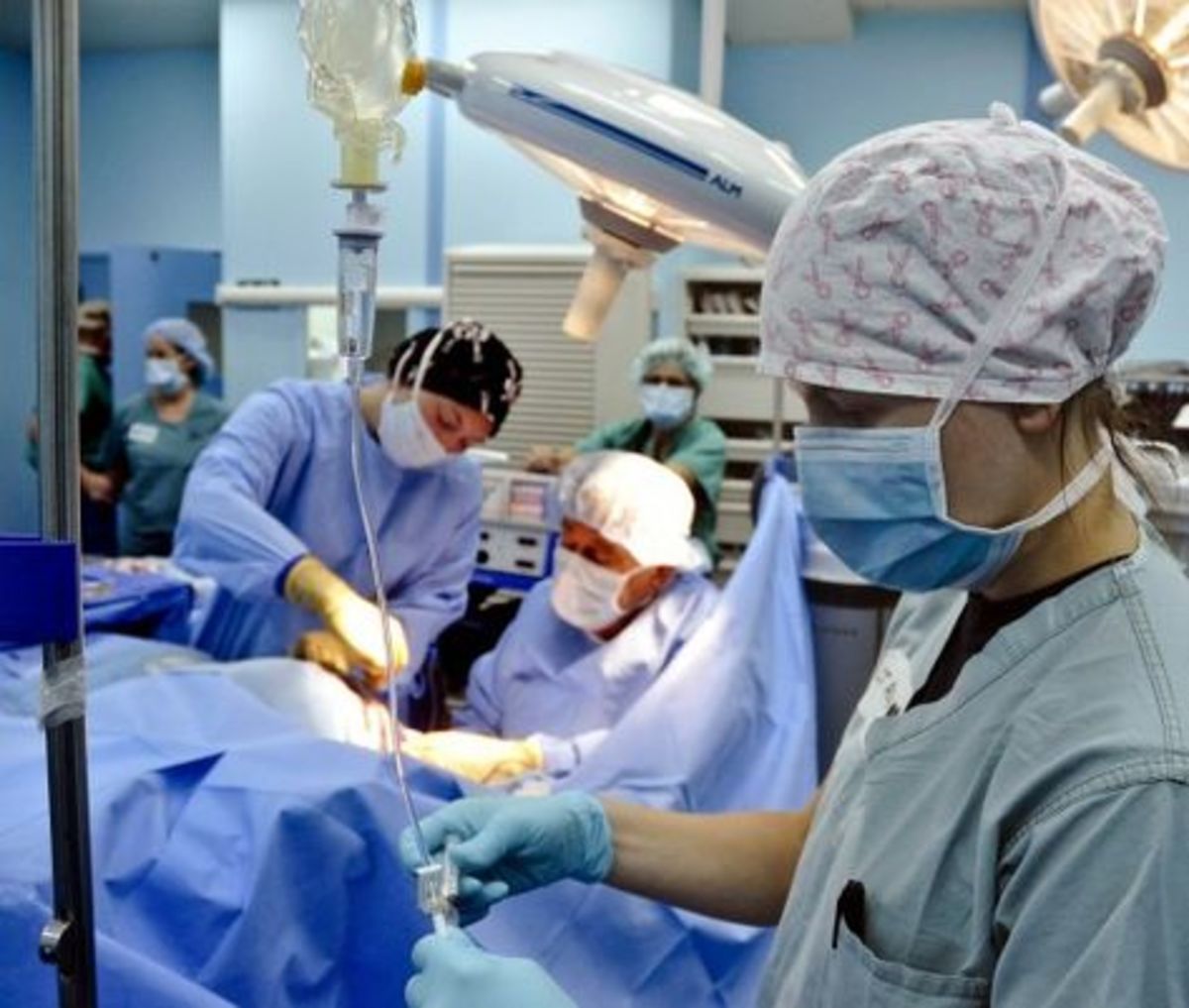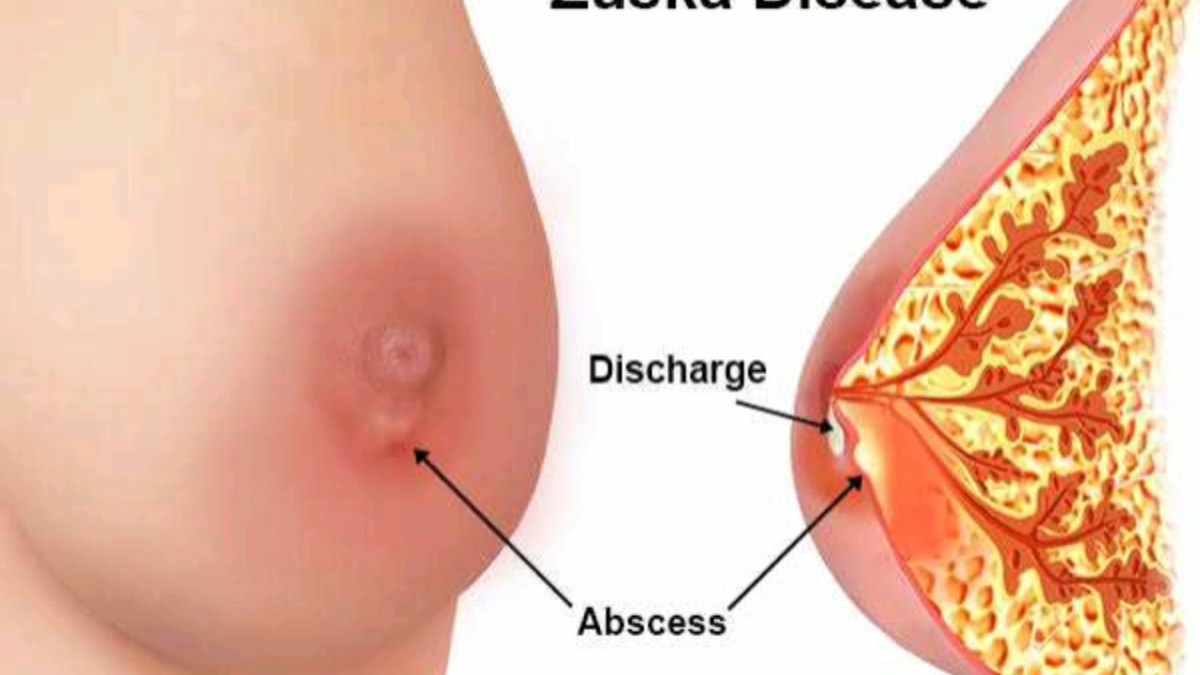A Complete Guide on Screening for the Commonest Cancer among Females!
Breast cancer is the commonest cancer among women, accounting for 22.9% of all cancers among women worldwide and resulting in 13.7% of cancer related deaths all over the world. Due the over all aging of the population of the world, the prevalence of breast cancer is expected to rise even further. Healthy individuals (particularly women) can be screened, in order to detect breast cancer and the precancerous lesions of breasts at an early stage so that interventions can be made to treat the disease at an early stage so that distant spread and extensive therapeutic interventions (which have many side effects) can be avoided. Though, this is a must for those women who have at least to risk factors mentioned in the hub linked below, it is advisable for any female to undergo screening of breasts for cancer.
- What is Breast Cancer - a guide to risk factors and features!
Breast cancer is the commonest cancer among women. The risk factors for breast cancer and the alarming features of breast cancer are discussed in this article.

What are the methods of screening for breast cancer?
1. Self examination of the breasts
2. Examination by a professional (specialized in screening for breast cancer)
3. Mammography
4. Tests for BRCA 1 and BRCA 2 genes
5. Molecular breast screening
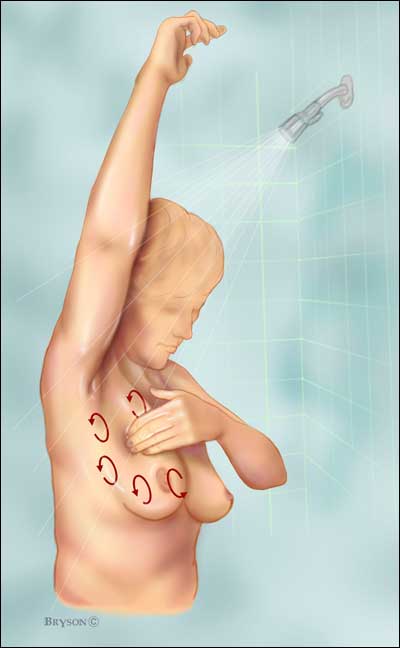
1. Self Examination of the breasts
It is important for every female to know how to screen their breasts for cancer after puberty. This should be performed as a routine in every month. The examination should be performed in four different instances to increase the rate of detection.
a) While bathing – the breasts should be palpated (touched) with soap applied lightly over the breasts. This allows the changes in consistency of the breasts and the texture of the skin to be felt easily.

b) In front of a mirror – the breasts should be inspected (observed) while standing in front of a mirror, for any changes in the size, shape, colour and the texture of the skin. The nipples should also be inspected for asymmetry and changes of shape. It is advisable to do this inspection while the arms dropping on either side of the body, while the arms raised and while the hands pressing on the hips on either side.
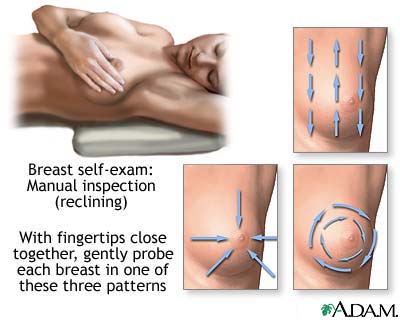
c) While lying flat (supine) – the breasts should be palpated (touched) while lying on a bed facing the ceiling. Each breast should be palpated in a circular manner starting from the nipple and going circularly to the periphery until the whole breast is palpated. The nipple should also be squeezed to see whether any discharges can be expressed.
d) Palpating the axillae (armpits) – the armpits should be palpated to check for enlarged or tender (painful to touch) lymph nodes.
Abnormalities detected during self examination of the breast should always be confirmed by examination by a physician or a healthcare professional trained in screening for breast disease. This is important to exclude the benign (non-cancerous) breast disease which can also present with almost all the features of breast cancer, except for the features due to distant spread. In addition, every clinical interview in a woman over the age of 35 years should be used as an opportunity to screen for breast cancer.
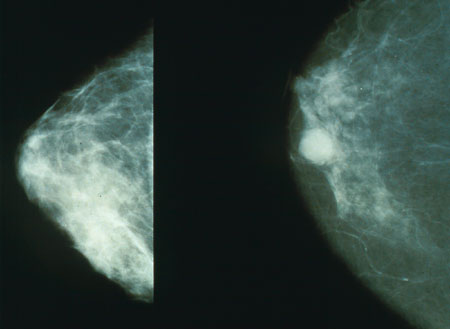
2. Mammography
The special task force formed to minimize morbidity due to breast cancer, recommended performing mammography in all the women from 50 years to 70 years of age, once in every 2 years to detect the premalignant (before becoming cancer) stages of breast cancer. This is a set of simple X-ray films of the breast, imaging the breast tissue. However, the disadvantages include, pain during the procedure, the relatively high cost compared to clinical examination and the small increased risk of developing breast cancer due to the exposure to radiation.

3. Tests for BRCA 1 and BRCA 2 Genes
BRCA genes put the individuals at a very high risk of developing breast cancer. Therefore, individuals who have a very high likelihood of having one of the genes should be screened. If an individual is found to have the gene, it is recommended to perform prophylactic mastectomy (removal of the breast) on both sides, with breast implantation (e.g. – silicon) as the risk is very high.
4. Molecular Breast Screening
This method of screening is yet at the level of research but may emerge very soon. With molecular screening, women who are at a higher risk of developing breast cancer can be easily recognized so that they can be followed-up more frequently or if the risk appears to be very high, prophylactic mastectomy performed.

Screening for breast cancer is a very important concept, which had lead to saving many women with progressing into advanced breast cancer and by that saving many years of life which would have been spent with the cancer, its complications and the side effects of the treatment. This also gives reassurance to healthy women. As a result, breast cancer screening is said to be one f the most successful screening programs world wide like the screening program for cervical cancer.


